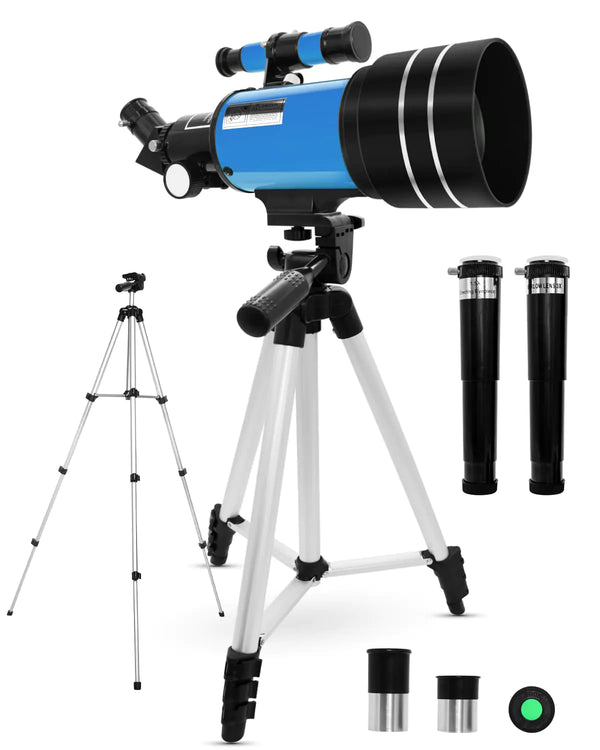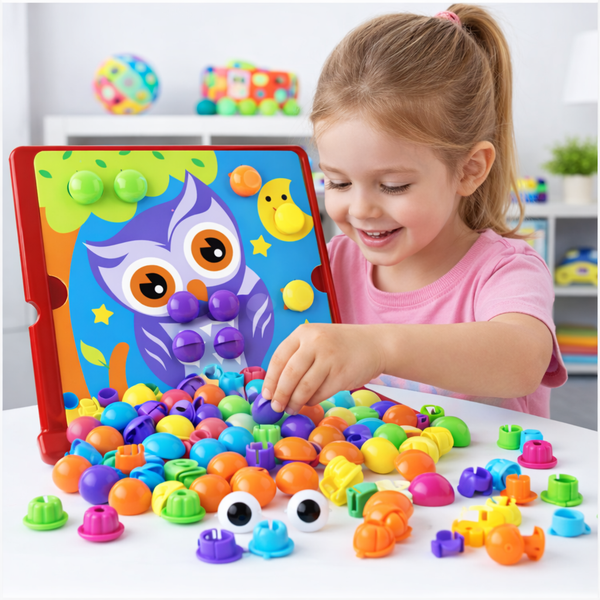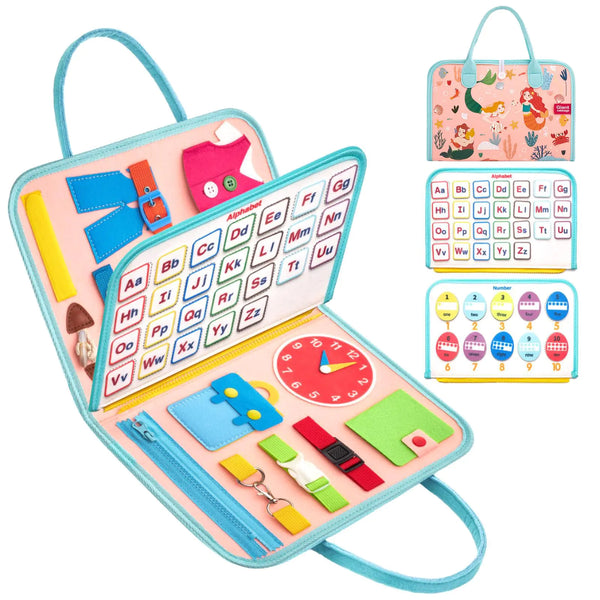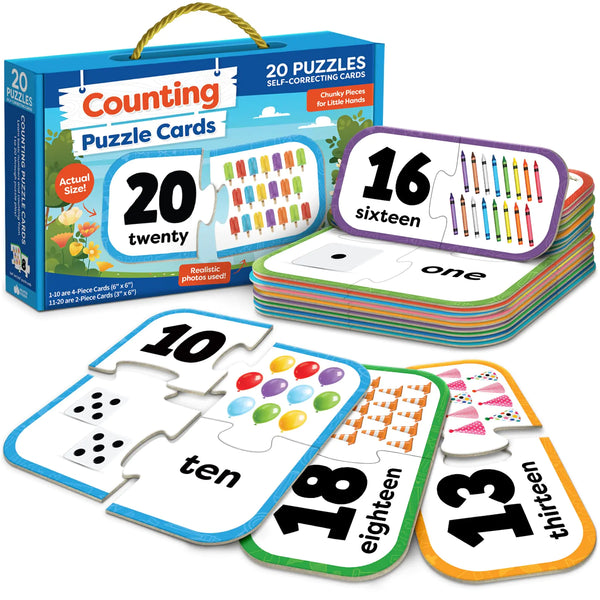Chemistry sets have long been a staple of childhood education, offering young learners an exciting introduction to the world of science. These kits are designed to spark curiosity, foster creativity, and provide hands-on learning experiences that can inspire a lifelong love of science. From simple experiments that can be done at home to advanced kits that challenge older children, there's a chemistry set out there for every budding scientist. This article explores the benefits of chemistry sets, provides safety tips, and highlights some of the best kits available on the market.
Key Takeaways
- Chemistry sets provide an engaging way for young learners to explore scientific concepts.
- Using chemistry sets can help develop critical thinking and problem-solving skills.
- Safety is paramount when using chemistry sets; adult supervision and proper safety gear are essential.
- There are chemistry sets available for all age groups and skill levels, from beginners to advanced learners.
- Incorporating chemistry sets into homeschooling can enhance the curriculum and make learning more interactive.
Why Chemistry Sets Are Perfect for Young Learners

Benefits of Early Science Education
Starting science education early can have a profound impact on a child's development. Chemistry sets introduce young learners to the basics of scientific principles in a fun and engaging way. This early exposure can foster a lifelong love for learning and curiosity about the world around them.
Building Curiosity and Creativity
One of the greatest benefits of chemistry sets is that they spark curiosity and creativity. Kids get to ask questions, make predictions, and see the results of their experiments firsthand. This hands-on approach encourages them to think critically and creatively, skills that are valuable in all areas of life.
Hands-On Learning
Chemistry sets provide a tactile learning experience that is both educational and entertaining. By using tools like test tubes, pipettes, and beakers, children can perform experiments that demonstrate real scientific concepts. This type of learning is not only more engaging but also helps to solidify understanding through practical application.
When kids see the results of their experiments, it makes science feel like magic. This sense of wonder is what makes chemistry sets such a powerful educational tool.
Top Chemistry Sets for Young Learners

Exploring science through engaging kits is a fantastic way to spark a lifelong interest in chemistry for young learners. Here are some of the best options available:
Best Overall Kits
When it comes to unlocking young minds, the MEL Science kits are top-notch. They offer a subscription service that delivers new experiments each month, ensuring that kids always have something new to explore. Another great option is the Crystal Growing Kit, which allows children to grow their own crystals and learn about the science behind them.
Budget-Friendly Options
For those looking to get the most bang for their buck, the National Geographic Science Magic Kit is a great choice. It includes a variety of experiments that use common household items, making it both affordable and educational. The Thames & Kosmos Kids First Chemistry Set is another excellent option, providing a range of simple yet fascinating experiments.
Advanced Kits for Older Kids
If your child is ready for more advanced experiments, the Chem C3000 by Thames & Kosmos is a fantastic choice. This kit includes over 300 experiments and covers a wide range of topics, from chemical reactions to the properties of gases. The Lab Experiment Kit is another excellent option, offering a more in-depth look at various chemical processes.
Safety Tips for Using Chemistry Sets

Adult Supervision
When it comes to using chemistry sets, adult supervision is non-negotiable. Not only does it ensure that experiments are conducted safely, but it also provides an opportunity for parents to bond with their children over educational activities. I always make sure to be present and engaged when my kids are experimenting. This way, I can guide them through the process and step in if anything goes awry.
Safety Gear
Safety gear is a must-have for any budding chemist. Items like safety goggles, gloves, and aprons can protect against spills and splashes. I always remind my kids to wear their safety gear before starting any experiment. It’s a simple step that can prevent accidents and make the experience more enjoyable.
Proper Storage
Proper storage of chemicals and equipment is crucial. I keep all the materials in a designated, child-proof area to avoid any mishaps. This not only keeps my kids safe but also teaches them the importance of organization and responsibility. A well-organized chemistry set can make all the difference in ensuring a safe and fun learning environment.
Safety first! Ensuring that your child understands the importance of safety measures can make their chemistry set experience both fun and educational.
Fun Experiments to Try at Home

Transform your home into an engaging science lab with these fun and educational experiments. These activities are perfect for sparking curiosity and making learning enjoyable for your kids. Let's dive into some exciting experiments you can try at home!
How to Choose the Right Chemistry Set

Choosing the right chemistry set for your child can be a bit overwhelming with so many options out there. But don't worry, I've got you covered! Here are some key factors to consider to make sure you pick the perfect set for your young scientist.
Age Appropriateness
It's crucial to select a chemistry set that matches your child's age. Kits designed for older kids might contain more complex experiments and chemicals that aren't safe for younger children. Always check the recommended age range on the box to ensure it's suitable for your little one.
Skill Level
Consider your child's current understanding of science. If they're just starting out, look for beginner kits that focus on basic experiments and concepts. For those who have already shown a keen interest in science, more advanced kits can provide a greater challenge and keep them engaged.
Included Materials
Take a close look at what's included in the kit. Some sets come with everything you need, while others might require additional household items. Make sure the kit includes enough materials to perform multiple experiments, so your child can enjoy hours of educational fun.
Invest in your child's future by choosing a chemistry set that not only entertains but also educates. These kits are fantastic educational toys for critical thinking, creativity, and problem-solving. They encourage learning through play and can inspire the next generation of STEMologists.
By keeping these factors in mind, you'll be well on your way to finding a chemistry set that will spark your child's curiosity and foster a love for science.
Incorporating Chemistry Sets into Homeschooling

Integrating chemistry sets into your homeschooling curriculum can be a game-changer. These sets provide a hands-on approach to learning that can make complex scientific concepts more accessible and engaging for young learners. By incorporating chemistry sets, you can turn abstract theories into tangible experiments, making science both fun and educational.
Don't just rely on the chemistry set alone. There are plenty of supplemental resources available online, including videos, worksheets, and interactive activities. These resources can help reinforce the concepts your child is learning and provide additional context. Combining these resources with your chemistry set can create a more comprehensive learning experience.
Chemistry sets aren't just for solo play; they can also be a fantastic way to engage in group activities. Whether it's a homeschooling co-op or a playdate, group experiments can foster teamwork and communication skills. Plus, it's always more fun to see a volcano erupt or a color-changing liquid with friends! Consider setting up a small science club where kids can take turns leading experiments and solving puzzles together.
Incorporating chemistry sets into homeschooling can make science both fun and educational, turning abstract theories into tangible experiments.
The Science Behind Popular Chemistry Set Experiments

Chemical reactions are the heart of many chemistry set experiments. When substances combine, they can create new products, often with exciting visual effects like fizzing, color changes, or even explosions. Understanding these reactions helps kids grasp fundamental scientific principles and see the real-world applications of chemistry.
Exploring the states of matter—solid, liquid, and gas—is another fascinating aspect of chemistry sets. Kids can observe how substances change from one state to another through heating, cooling, or mixing. This hands-on learning makes abstract concepts more tangible and memorable.
Acids and bases are common in many chemistry kits. By experimenting with these substances, kids learn about pH levels and how different chemicals interact. This knowledge is not only educational but also practical, as it applies to everyday items like food and cleaning products.
Chemistry sets are a fantastic way to make science fun and engaging for young learners. They provide a safe environment to explore and experiment, fostering a lifelong love for learning.
DIY Chemistry Set Projects

Creating your own chemistry set projects at home can be an incredibly rewarding experience for both you and your kids. Not only does it provide a fun and educational activity, but it also helps in unleashing creativity and sparking a lifelong interest in science. Here are some exciting DIY projects you can try with your young learners.
Where to Buy the Best Chemistry Sets

Finding the perfect chemistry set for your young scientist can be a fun adventure. Here are some of the best places to look for high-quality, educational, and engaging chemistry sets that will have your kids sparking curiosity in no time.
Online Retailers
Online shopping offers a vast selection of chemistry sets, making it easy to compare prices and read reviews. Websites like Amazon, MindWare, and Home Science Tools provide a variety of options, from beginner kits to more advanced sets. The convenience of online shopping means you can find the perfect kit without leaving your home.
Local Stores
Don't overlook your local toy stores and educational supply shops. Stores like Target, Walmart, and even some specialty science stores often carry a good selection of chemistry sets. Shopping locally not only supports your community but also allows you to see the product in person before purchasing.
Second-Hand Options
For those on a budget, second-hand stores and online marketplaces like eBay or Facebook Marketplace can be great places to find affordable chemistry sets. Just make sure to check that all the necessary components are included and that the set is in good condition.
Whether you choose to shop online, locally, or second-hand, the most important thing is to find a chemistry set that will inspire and educate your young learner. Happy shopping!
Inspiring Future Scientists with Chemistry Sets

One of the best ways to inspire young scientists is by introducing them to role models in the field. Whether it's famous chemists like Marie Curie or modern-day scientists making waves, these figures can show kids what's possible. Sparking curiosity in children by sharing stories of these role models can ignite a lifelong passion for science.
Chemistry sets are more than just toys; they are gateways to future careers in STEM. By engaging with these kits, kids can explore various scientific fields and discover what excites them the most. From chemical engineering to environmental science, the possibilities are endless. Encouraging kids to experiment and learn can help them identify their interests early on.
The beauty of chemistry sets lies in their ability to foster a love of learning. When kids see the results of their experiments, it builds confidence and encourages further exploration. This hands-on experience is invaluable for developing problem-solving skills and creativity. Plus, it's a fun way to spend time together as a family, making learning a shared adventure.
Inspiring the next generation of scientists starts with sparking curiosity: choosing the best science kits for young children. Explore safe, educational kits for budding scientists, emphasizing age-appropriate selections and fostering a love of learning.
Common Mistakes to Avoid with Chemistry Sets

Ignoring Instructions
One of the most common mistakes is ignoring the instructions that come with the chemistry set. These instructions are there for a reason—they ensure that the experiments are conducted safely and correctly. Always read the instructions thoroughly before starting any experiment. This will not only keep your child safe but also make the learning experience more effective.
Skipping Safety Precautions
Safety should always be a top priority when using chemistry sets. Skipping safety precautions can lead to accidents and injuries. Make sure your child is wearing the appropriate safety gear, such as goggles and gloves, and that they understand the importance of these precautions. Safety first is a good rule to follow.
Improper Cleanup
After the fun and games are over, it's crucial to clean up properly. Improper cleanup can lead to chemical residues being left behind, which can be harmful. Ensure that all materials are disposed of correctly and that the workspace is thoroughly cleaned. This not only keeps the area safe but also teaches your child the importance of responsibility and cleanliness.
Remember, the goal is to make learning fun and safe. By avoiding these common mistakes, you can ensure that your child has a positive and educational experience with their chemistry set.
When using chemistry sets, it's crucial to avoid common mistakes such as neglecting safety instructions, mixing incompatible chemicals, and improper storage. These errors can lead to accidents and spoil the fun of scientific exploration. For more tips and to explore our range of educational toys, visit our website.
Conclusion
So there you have it, folks! Chemistry sets are not just a blast, but they’re also a fantastic way to spark curiosity and a love for science in young learners. Whether it’s creating colorful reactions, making things fizz and pop, or just exploring the wonders of everyday substances, these kits offer endless fun and learning. So why not grab a kit, don your safety goggles, and dive into the magical world of chemistry with your kids? Who knows, you might just inspire the next great scientist!
Frequently Asked Questions
What age is appropriate for using chemistry sets?
Most chemistry sets are designed for children aged 8 and above. However, there are kits specifically made for younger children with simpler experiments and safer materials.
Are chemistry sets safe for children?
Yes, chemistry sets are safe when used under adult supervision and with proper safety gear. Always follow the instructions provided in the kit.
What safety gear is needed when using a chemistry set?
Basic safety gear includes safety goggles, gloves, and sometimes a lab coat. The kit should specify what is required.
Can chemistry sets be used for homeschooling?
Absolutely! Chemistry sets can be a great addition to a homeschooling curriculum, providing hands-on learning experiences that complement theoretical lessons.
What should I do if an experiment goes wrong?
If an experiment goes wrong, stop immediately and follow any emergency instructions provided in the kit. Ensure the child is safe and consult the kit's guide for troubleshooting.
How do I store chemicals from a chemistry set?
Store chemicals in a cool, dry place away from direct sunlight and out of reach of children and pets. Follow any specific storage instructions provided in the kit.
Can I buy additional materials for my chemistry set?
Yes, many kits allow for the purchase of additional materials or refills. Check with the manufacturer or retailer for available options.
What are some fun experiments to try with a chemistry set?
Some popular experiments include creating volcano eruptions, making slime, and observing color-changing reactions. Many kits come with a variety of experiments to try.
















